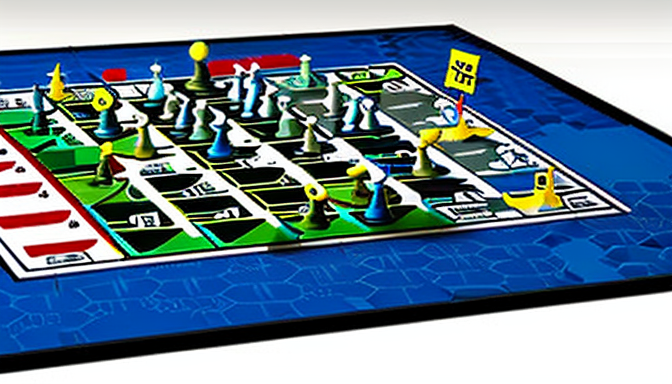In the world of sports, formations are not just shapes on a field; they are the backbone of strategy. They determine how a team moves, defends, and attacks. Think of formations as the blueprint of a house. Without a solid design, the structure can crumble. In this article, we’ll dive into the intricate details of various formations and their pivotal roles in gameplay.
Take soccer, for instance. The classic 4-4-2 formation is widely recognized. It sets up two banks of four players, creating a strong defense while allowing for quick counter-attacks. But what about the 3-5-2? This formation emphasizes midfield control, giving teams the upper hand in possession. Each formation has its strengths and weaknesses, often dictated by the players’ skills and the opponent’s tactics.
When managers decide on a formation, they’re not just picking a layout; they’re crafting a strategy. They consider factors like the opponent’s style and the game’s context. For example, if a team is facing a strong aerial attack, they might shift to a more defensive setup. This adaptability is crucial. It’s like a chess game—every move counts, and the right formation can turn the tide in an instant.
As we explore these game-changing formations, remember: the beauty of sports lies in its unpredictability. Each match tells a story of tactical battles, where the right formation can lead to victory. So, let’s unpack these strategies and see how they can elevate a team’s performance on the field.
Understanding Key Formations
When it comes to sports, formations are like the backbone of a team’s strategy. They define how players position themselves on the field, which can significantly influence the game’s outcome. Think of it as a chess game. Each piece has its role, and the arrangement can make all the difference. For instance, in soccer, a 4-4-2 formation provides a solid balance between defense and attack. It allows teams to maintain control while being ready to strike.
In basketball, the pick and roll is a classic formation that creates opportunities. It involves one player setting a screen for another, leading to a variety of offensive options. This tactic keeps the defense guessing. Similarly, in American football, formations like the West Coast offense emphasize short passes and quick plays, allowing teams to exploit mismatches.
Understanding these formations is crucial for coaches and players alike. They need to grasp not just the mechanics but also how to adapt them based on the game situation. For example, if a team faces a strong opponent, they might switch to a more defensive setup. This adaptability can be the key to victory.
Here’s a quick breakdown of some popular formations:
| Sport | Formation | Purpose |
|---|---|---|
| Soccer | 4-4-2 | Balanced attack and defense |
| Basketball | Pick and Roll | Creates scoring opportunities |
| Football | West Coast Offense | Short passes and quick plays |
In conclusion, understanding key formations is essential for any team aiming to improve. It’s not just about knowing them; it’s about applying them effectively. The right formation can elevate performance, turning a good team into a great one.

Adapting to Opponents
To truly excel in sports, understanding your opponent is crucial. It’s like a chess game. You wouldn’t just move pieces randomly, right? You’d analyze your opponent’s strategy, anticipate their moves, and adjust accordingly. The same goes for sports formations. Adapting your formation based on the strengths and weaknesses of your rivals can make all the difference.
When teams face off, it’s not just about what you do; it’s also about how well you read the other side. For instance, if you know the opposing team has a strong forward, you might want to tighten your defense. This could mean shifting from a 4-3-3 to a more defensive 4-2-3-1 formation. Why? Because it adds more bodies to your defense, giving you a better chance to counter their attacks.
Moreover, flexibility is key. Imagine a basketball team that sticks to one play, regardless of the opponent’s style. They’d be easy to beat! Instead, successful teams often adjust their formations mid-game. Here’s how:
- Assess the Competition: Study their previous games. What worked against them?
- Communicate: Players must talk on the field. Quick adjustments can turn the tide.
- Implement Changes: Don’t be afraid to switch tactics. It can confuse the opponent.
In conclusion, adapting to your opponent isn’t just smart; it’s essential. The best teams are those that can read the game and respond with agility. So, the next time you watch a game, pay attention to how managers shift their strategies. It’s a thrilling dance of tactics that often decides the winner!
Frequently Asked Questions
- What are tactical formations in sports?
Tactical formations are strategic arrangements of players on the field that dictate how a team operates during a game. Think of them as the blueprint for a team’s gameplay, influencing everything from offense to defense.
- Why is it important to adapt formations based on opponents?
Adapting formations allows teams to exploit their opponents’ weaknesses while shielding themselves from their strengths. It’s like changing your game plan mid-battle to catch the enemy off guard!
- How can understanding key formations improve team performance?
By mastering key formations, teams can enhance their overall strategy, leading to better coordination and teamwork. It’s the difference between a well-oiled machine and a chaotic scramble on the field!
- Can formations be changed during a game?
Absolutely! Coaches and players often adjust formations in real-time based on the flow of the game. Flexibility is crucial in staying one step ahead of the competition!